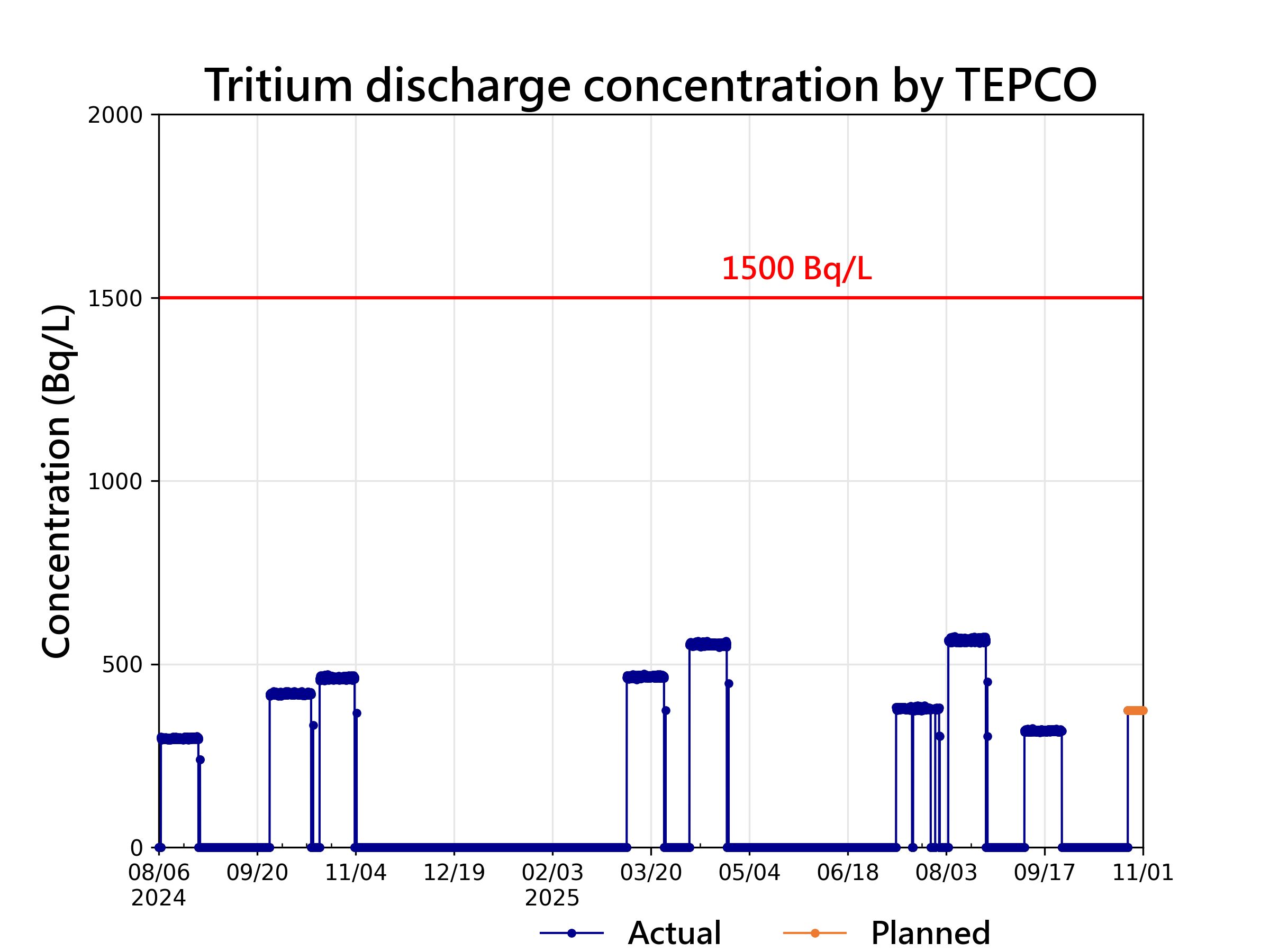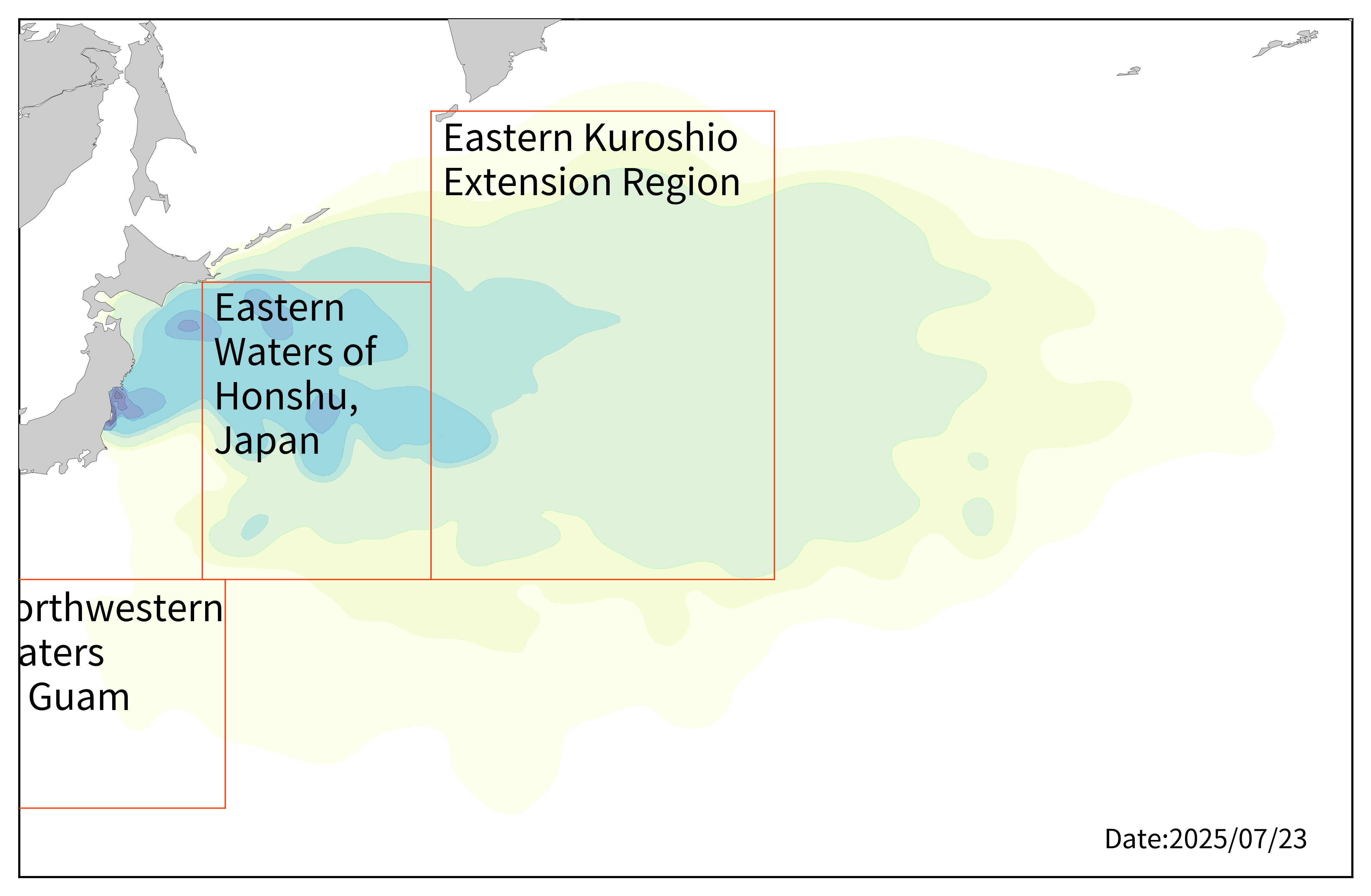

Weekly Forecast


Discharge Batch Details :
●Next scheduled emission date: October 30, 2025. Emissions will begin shortly.
●Actual emission concentration: 0 Bq/L.
System Forecast Release Information :
●Forecast Period : October 30, 2025~November 5, 2025
●Forecast Release Concentration : For the next 7 days, the release concentration for model diffusion forecast will be 374 Bq/L (as shown by the yellow line after Figure 10/30).
From August 24, 2023, until the end of the 16th batch, a total of approximately 28.8 x 10¹² Bq of tritium activity will be emitted.
Note:Collecting actual monitoring information from Japan



Over the next few days, after the Kuroshio Current passes near the coast of Fukushima, Japan, it will continue to move northeastward and split into two branches, entering the waters east of Honshu, Japan, at 30.4°N and 35.8°N respectively. The maximum current speed in this area is approximately 1.6 m/s, and the current flows generally eastward, joining the extended Kuroshio Current, where the maximum current speed is approximately 1.7 m/s. The current then flows southeast and merges into the North Pacific Current. Along the Fukushima coast, it will move slowly northward, largely influenced by the north-south tidal movement and the Kuroshio Current.

In the seven-day forecast simulation, the discharged tritium-containing wastewater will be influenced by the Kuroshio Current and the North Pacific Current, spreading eastward. The primary affected area is the eastern waters of Honshu, Japan, where the maximum concentration reaches 1 x 10⁻⁴ Bq/L. The secondary affected area is the eastern part of the Kuroshio Current, where the maximum concentration reaches 1 x 10⁻⁵ Bq/L. Furthermore, the 10⁻⁷ Bq/L concentration line extends eastward to approximately 161.75 degrees west longitude and southward to approximately 20.75 ˚N latitude.
Under continuous discharge conditions, the recently discharged tritium-containing wastewater is mainly affected by the north-south tidal currents along the Fukushima coast, slowly spreading northward. The maximum concentration reaches 1 x 10⁻³ Bq/L at a radius of 50 km from the discharge point. Overall, based on a concentration threshold of 10⁻⁷ Bq/L, the affected area covers approximately 4942 km east of the discharge point and approximately 3301 km north-south.

The 10-7 Bq/L concentration line is 1408 km away from Taiwan Island and will have no impact on the waters surrounding Taiwan in the next 7 days.





